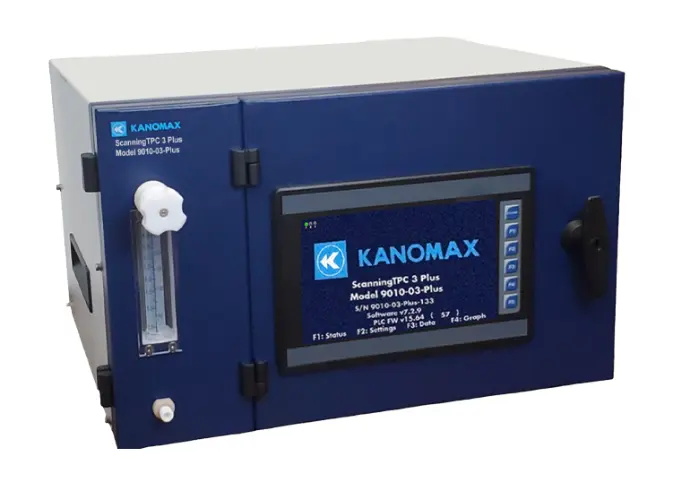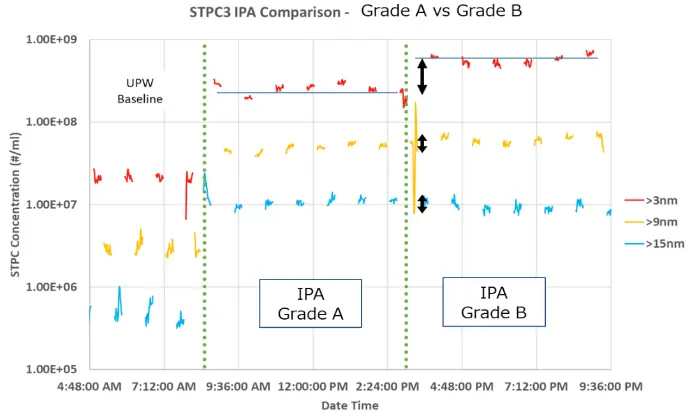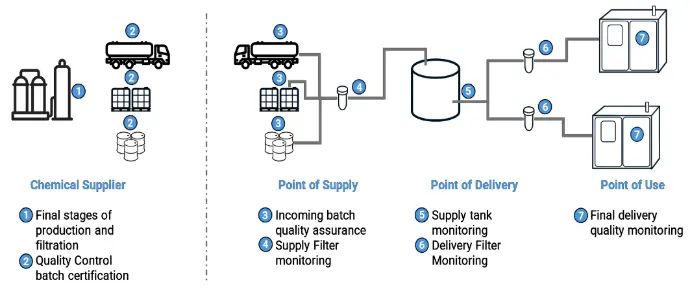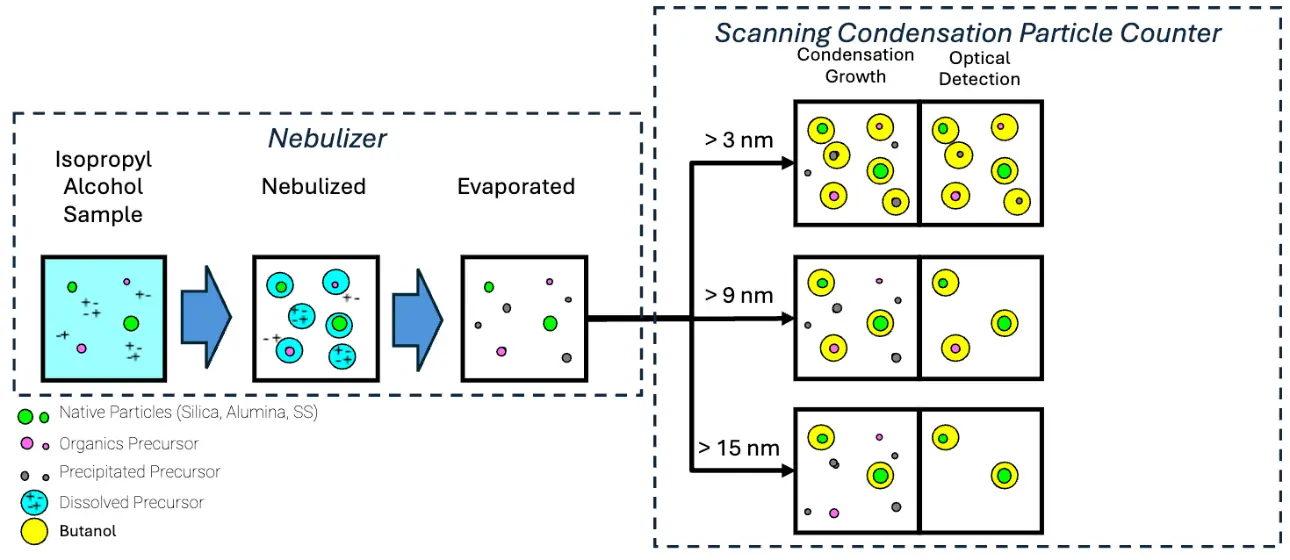Monitor Nanoparticle Contamination in Isopropyl Alcohol to Reduce Wafer Defects
Scanning Threshold Particle Counter 3 Plus
The industry's only real-time liquid 3 nanometer particle counter for isopropyl alcohol (IPA)

Any particles left on semiconductor wafers after the wet processes can lead to yield-killing defects. As the feature sizes on chips get smaller, “killer particles” also become smaller. Further, dissolved contaminants of organic, inorganic, or hybrid composition, termed “particle precursors” also become challenging detriments to yield.
There are multiple potential sources of particle precursors in chemical delivery systems including ion exchange resins, tubing and piping, fluid handling components and filter membranes.
Conventional light-scattering particle detection technologies are challenged to measure particles below 20nm, much less particle precursors, which do not form particles until wafer drying.
Kanomax FMT’s patented process of liquid nebulization in conjunction with aerosol-based condensation particle counting (CPC) has the proven ability to detect and count particles as small as 2.5nm, making it an ideal tool for inline measurements of particle precursors and particles in process chemicals.
Because the technology nebulizes the sample and then evaporates the liquid to leave only particles to be measured, it is immune to bubbles and particle geometry which can impact other technologies.CPCs are also much less sensitive to the material properties of contaminants.
To help identify the potential source and impact of the contamination, the STPC3 Plus measures and reports in three size channels, >3nm, >9nm, and>15nm.
This technology has been successfully deployed for ultrapure water (UPW) for many years and is now being applied to other process chemicals in the microelectronic fabrication.

This graph shows the different levels of contaminants in three different samples measured by the STPC3 Plus. The concentration of > 9 nm particles in both IPA samples are similar, but the GradeB sample has significantly higher levels of signal in the 3 nm particle cumulative channel. This would not be detected by conventional inline techniques which cannot monitor contaminants down to single nanometer sizes.
Chemical Supply Chain
The STPC3 can be used for grab sample or online monitoring of IPA.Deploying it in multiple locations in the chemical delivery system guards against contamination.

How it Works

The STPC3 consists of two modules, namely theNebulizer, and the Condensation Particle Counter.
The IPA sample can be introduced into the Nebulizer module via a pressure vessel (for grab samples) or process side stream (inline).
The sample is nebulized into a fine mist of droplets(100’s of nm in diameter) with a patented nano-nebulizer. Larger droplets, likelier to contain multiple particles, are removed by inertial impaction. The IPA is then evaporated so that only the particles and non-volatile precursors remain.
The particles enter the Scanning CPC where butanol vapor is condensed on the particles to magnify their sizes to several microns. Condensational growth starts based on the size of the particle and internalCPC temperatures. The grown particle seeds are readily detected during their subsequent passage through an optical counter. Thus, by changing an operating variable in the CPC, the STPC3 can “scan”through particle sizes, to provide >3nm, >9nm, and>15nm particle concentrations.
Top tier fabrication facilities are increasingly relying on the STPC3 to determine if IPA and other pure chemicals are ready for wafer contact in their most advanced manufacturing processes.
Technical Data
Measurement range: 1E4 to 1E10 particles/mL
Threshold sizes: 3, 9, 15 nm
Number of size channels: 1-3 (user configurable)
Dead time for channel adjustment: 5 minutes
Total flow rate: 50-250 mL/min
Response time to concentration change: <30 seconds
Inlet liquid pressure (online): 200-620 kPa (30-90 psig)
Compressed air/nitrogen flow rate/pressure: 2.5-7.0 std L/minClean Dry Air or Nitrogen: 340-410 kPa (50-60 psi) ANSI IS08573-1:2010 Class 2 for compressed air
Detector working fluid: Reagent-grade (or better) n-Butyl alcohol
Working fluid consumption rate: Under 150 mL/day
Ambient temperature range: 15-35°C (59-95°F)
Ambient relative humidity range: 0-85%
Dimensions (W ✕ D ✕ H): 42 ✕ 43 ✕ 27 (43 with bottle) cm, 16.7 ✕16.8 ✕ 10.5 (16.8 with bottle) inches
Weight: 16.1 Kg (35.5 lbs)
Power (Nebulizer): Universal 100-240 VAC, 50/60 Hz, 90 W max
Power (CPC): Universal 100-240 VAC, 50/60 Hz, 210 W max
Communication Interfaces: Ethernet, Wi-Fi, USB, Analog 4 – 20 mA
Display: 7 inch TFT Color, touch panel
Specifications subject to change without notice.
Ready to embark on a journey of digital transformation?
Let's turn your vision into reality. Contact us today to set your brand on the path to digital excellence with us.